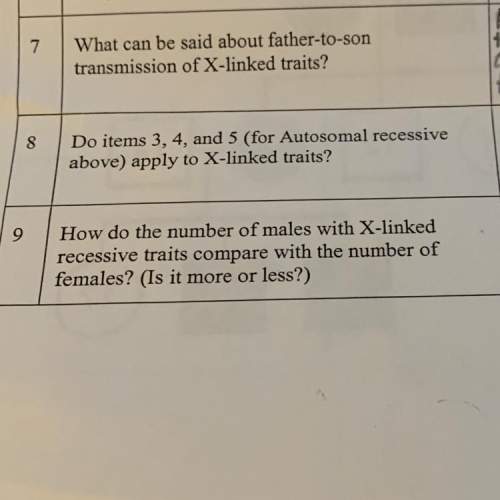PLEASE HELP ASAP!
Online Project:
Using what you have learned, and the data provided for each...

Biology, 13.04.2021 05:40 brooklynpage5283
PLEASE HELP ASAP!
Online Project:
Using what you have learned, and the data provided for each trial, answer the questions in the essay box below.
1. Imagine tossing a coin:
A. What are your chances for tossing a head?
B. What are your chances for tossing a tail?
2. A coin is tossed 10 times:
A. How many times do you expect to get heads?
B. How many times do you expect to get tails?
3. Using this data for the 10 coin tosses, calculate and record the deviation observed from what you expected using the following formula:
The more the experimental results deviate from the expected results, the more the deviation value will approach the value of 1.0. As your results get closer to the expected results, the deviation is smaller and nears the value of 0.0.
Interpret the meaning of the deviation value you obtained.
4. A coin is tossed 100 times:
A. How many times do you expect to get heads?
B. How many times do you expect to get tails?
5. Using this data for 100 coin tosses:
A. Calculate the deviation for the 100 tosses.
6. The 100 coin tosses are repeated. The results are added to the results of the first 100 coin tosses.
A. How many times do you expect to get heads out of the 200 tosses?
B. How many times do you expect to get tails out of the 200 tosses?
7. Using this data for the 200 coin tosses:
A. What is the deviation for the 200 tosses?
B. How does increasing the total number of coin tosses from 10 to 100 affect the deviation?
C. How does increasing the total number of tosses from 100 to 200 (or more) affect the deviation?
D. What two important probability principles were established in this exercise?
8. With two coins, both coins are tossed 100 times.
A. How many times do you expect to get 2 heads?
B. How many times do you expect to get 2 tails?
C. How many times do you expect to get one head and one tail?
9. The percent of occurrence is the obtained results divided by the total tosses and multiplied by 100. Using this data for the two coins being tossed 100 times. Calculate the percent occurrence for each combination:
A. What is the percent of occurrence for two heads?
B. What is the percent of occurrence for two tails?
C. What is the percent of occurrence for one head and one tail?

Answers: 3


Another question on Biology

Biology, 22.06.2019 04:30
What type of organism is a one-celled organism that functions as a single unit? a. bi-celled b. single-celled c. pre-celled d. multi-celled
Answers: 2

Biology, 22.06.2019 11:30
28. how many linkage groups will be formed by homogametic organism with 28 chromosomes?
Answers: 2

Biology, 22.06.2019 14:30
What happens when a plant is losing too much water through transpiration? question 14 options: stomata open stomata close guard cells swell respiration increases
Answers: 1

Biology, 22.06.2019 14:30
If 360 joules of work are needed to move and create a distance of 4 m what is the weight of the crate
Answers: 1
You know the right answer?
Questions

Geography, 22.06.2019 18:00

Mathematics, 22.06.2019 18:00



English, 22.06.2019 18:00





Biology, 22.06.2019 18:00

Mathematics, 22.06.2019 18:00


English, 22.06.2019 18:00

Computers and Technology, 22.06.2019 18:00

Biology, 22.06.2019 18:00





Mathematics, 22.06.2019 18:00




